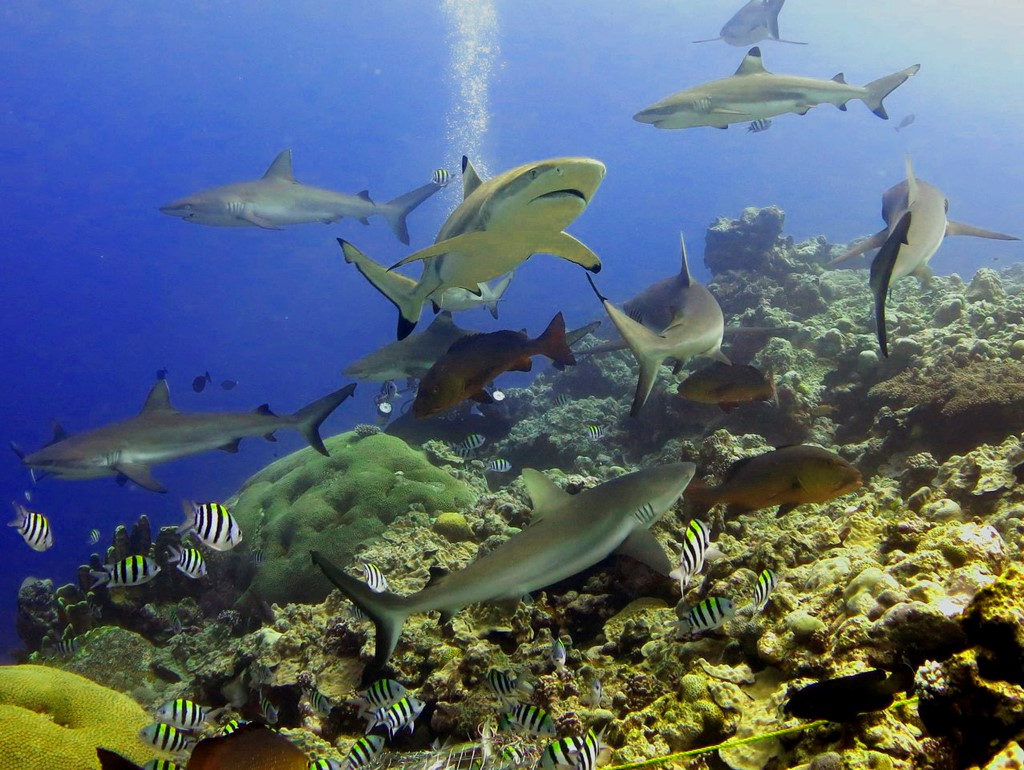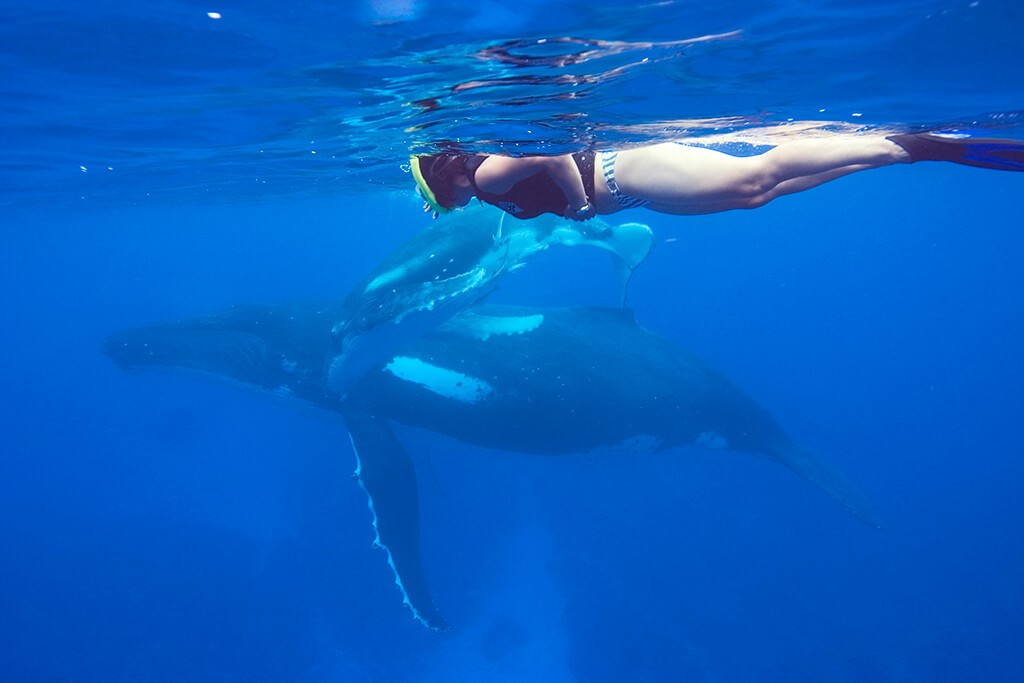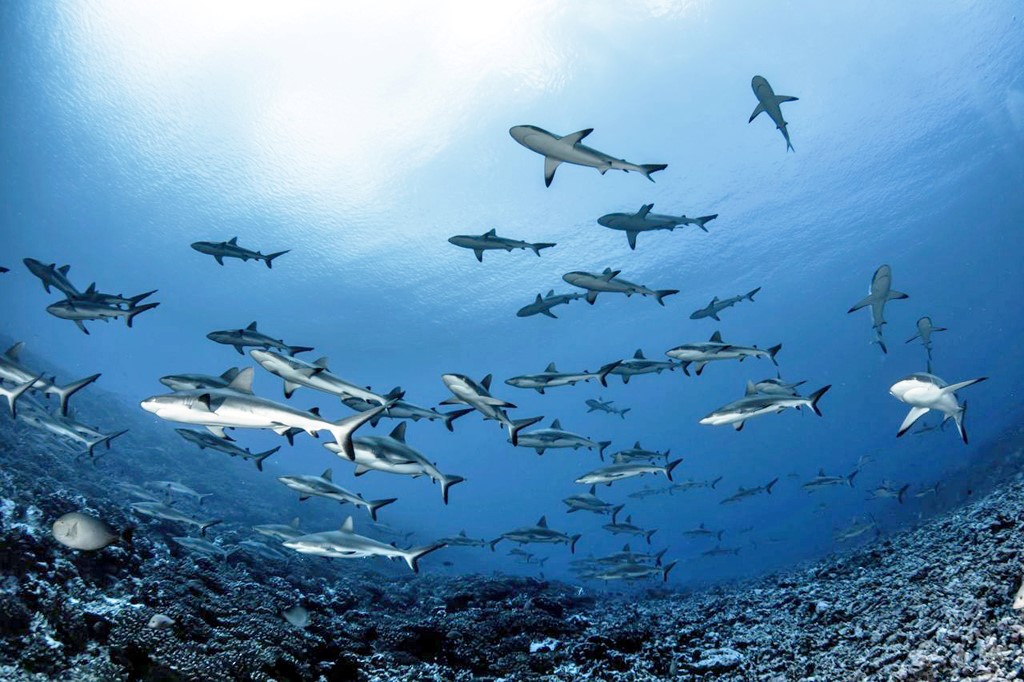
Have weeks of home sheltering and social distancing got you dreaming of blue water and far away South Pacific islands? Well don't stop dreaming, although we don't know exactly when, the time will come when you'll be able to travel to those destinations once again. And while you are dreaming, why not do a little planning as well. With resorts and airlines currently waiving or amending reservation and rebooking policies to accommodate uncertain times, there's little risk to staking your claim and getting ahead of the rush that's sure to follow when global travel is back in full swing. To get you started, here are five incredible South Pacific diving adventures to sample.

Current Affairs
There are drift dives, and then there are the passes of Rangiroa and Fakarava. The huge rings of coral reef that form these Tahitian atolls create expansive sheltered lagoons. Daily tidal ebb and flow moves huge volumes of water in and out of the lagoons through several relatively narrow passes. Divers can hitch a ride on these fast-moving flows, but the real thrill isn't being carried by the currents, it's what you'll encounter along the way. Small fish gather to feed on morsels carried on the moving waters, and bigger fish arrive looking to snack on the smaller ones. The pass fills with clouds of jacks, barracudas and wrasses, plus sharks — lots of sharks. Grey reef sharks take center stage, swarming the pass in massive shoals of 100 or more. Also in the mix are hammerheads, black tip and silver tip sharks. At certain times of the year, manta rays join the action, and pods of dolphins may enter the fray on any given day. Pass dives become a thrilling drift for divers who stay in the center to catch the fastest flow, while the same dive can be a more mellow experience for divers who hold to the side for a slower ride. Caradonna offers special packages with Maitai Rangiroa Resort and Havaiki Lodge Fakarava that includes pass dives and a variety of additional dive adventures inside and outside the lagoon.

Manta Central
Divers know Yap as the place for manta rays. Sure, you can see mantas at dozens of places around the world, but not with the almost guaranteed regularity and ideal conditions that the waters of Yap provide. The big rays are there year-round, and can typically be found in relatively shallow water, which gives divers time for longer interactions and plenty of ambient sunlight to take in the scene. Many of Yap's best manta encounters take place at cleaning stations. At these sites, divers can settle in and let the rays come their way. Divers may also encounter mantas at any of the additional 50-plus dive sites around the island, which range from tranquil coral gardens and shallow macro sites to shark feeds and outer reef drifts where anything can swim in out of the blue. At certain times of the year, the mantas will stage courtship and mating displays, with several males lining up behind each female like an underwater conga line. If you have mantas on your mind, Caradonna can help you plan a Yap diving adventure with the island's premier dive operators.

Sunken History
There's no way you could dive all the wrecks of Truk in a single week. Not with more than 60 historic World War II ships lying at the bottom of this expansive lagoon. Once the site of a large Japanese naval base, the country now known as Chuuk — though the lagoon is still referred to as Truk — was the site of a massive US air raid that sank an entire fleet. Because these are actual wrecks, not stripped-out hulls intentional sunk for a dive attraction, the ships of Truk lagoon sank intact, and have become a giant underwater museum. Deck guns and hardware are now covered in colorful blankets of soft corals, while cargo holds and cabins hold a treasure trove of artifacts and ordinance. Warm water and minimal currents provide ideal conditions, with wrecks lying at a variety of depths to provide something for everyone from the reasonably-accomplished recreational diver to the hardcore technical diver. And though it is a ship graveyard, Truk is also a lively place filled with a wealth of marine life. Caradonna can arrange for both liveaboard and shore-based excursions to Truk Lagoon.

Memorable Mammals
Each year, two very different species of mammals converge on the islands of Tonga. Humpback whales make a 4000-mile odyssey from the frigid waters of Antarctica to Tonga's tropical shallows. And from points around the globe, small groups of homo sapiens fly to these islands for a rare and unique opportunity to join the whales. Of the more than 170 islands that make up the nation of Tonga, there are two special places where whale encounters take place. These are the Vava’u island group and the Ha’apai group. There are thought to be some 1,000 humpback whales that visit Tonga waters each year between the months of July and October. The mothers come to give birth and nurse their calves in warm tropical waters, and amorous males follow to compete for the attention of potential mates. Because these whale gatherings take place in sheltered areas close to the islands, there is a unique opportunity for humans to enter the water and observe the whales in their natural environment. In-water encounters are staged from small boats, with a maximum of four participants from each boat allowed in the water at any one time. This makes for a very personal experience, and memories that will last a lifetime. Prime whale season books up fast, so if you're dreaming of swimming with humpbacks, get in touch with your Caradonna agent to start planning now.

Hooked on Palau
With more than 400 species of reef fish, 700 species of soft and hard corals and some of the most spectacular and varied underwater topography in the South Pacific, Palau deserves a top spot on every diver's list of dream destinations. And when you are making that list, be sure to include the Blue Corner. This site is justifiably famous for it non-stop marine life excitement, and for the unique way in which divers join the action. The corner is an extension of reef line that juts out into open water. When currents flow across this underwater rampart, upwelling nutrients attract little fish, which brings big fish, and even bigger fish, and so on. It would be thrilling enough to drift past this underwater epicenter of life, but dive operators in Palau do one better. They provide reef hooks and tethers, which attach to the diver's BCD and are carefully secured to a non-living piece of the ocean floor. Once anchored, divers add a bit of air to their BCDs and float weightless, suspended in the current among huge schools of fish and squadrons of patrolling sharks. For added excitement, divers can make their way to Blue Corner through a series of vertical shafts that drop from the shallow reef top into a huge cathedral-like room that opens to the edge of the wall. Caradonna works with Palau's top-rated dive shops and resorts, and can custom-craft your ideal dive trip.